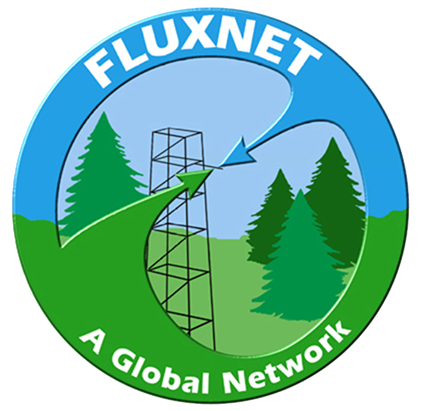This month we interview Dr. Maricar Carmelita Alberto. She is a Senior Associate Scientist who studies greenhouse gas exchange on rice at the International Rice Research Institute in the Philippines.

How did you become a flux scientist? What was your pathway, mentors, training and opportunities?
I started to become a flux scientist when Dr. Achim Dobermann (then IRRI Deputy Director General for Research) sent me to AsiaFlux Training Course on Micrometeorology in 2006 in Tsukuba, Japan. Right after the training, I started to procure and set-up the different sensors of the eddy covariance system (ECS). Dr. Reiner Wassmann (IRRI Senior Scientist and Climate Change Specialist) suggested that I make my first flux measurements over flooded and non-flooded rice fields in order to make a comparative analysis in terms of their microclimates and ecosystem exchange of CO2 and energy fluxes. It was then that I realized that setting-up and running the ECS is not enough; that I needed some more technical guidance on how to interpret all the data that I am generating. So, I applied for the JSPS Ronpaku PhD by Research Program and fortunately, I got the scholarship from 2008 to 2013. This gave me a great opportunity to interact with experts on flux measurements specifically, Dr. Akira Miyata (NIAES, Japan) and Prof. Takashi Hirano (Hokkaido University, Japan), who served as my advisers and mentors. I was also given the opportunity to present the outcomes of our research in several AsiaFlux workshops through funding assistance from APN/AsiaFlux.
You work with rice. What are some of the unique challenges working with rice in terms of collecting, processing and interpreting data?
The EC technique encounters a number of additional problems when used in agricultural ecosystems particularly rice ecosystems. Many of the factors controlling gas exchange between rice paddies and the atmosphere are different from those in dryland agriculture and other ecosystems because rice is flooded during most of its cultivation period. The existence of floodwater, anaerobic soil or changes in micrometeorological environment with flooding will influence root activity, photosynthesis, and respiration of rice plants. Rice lands are also intensively managed and exposed to frequent and persistent disturbance, perhaps more so than grasslands and many forest ecosystems. Since nearly all rice crops are sown and harvested annually or semi-annually, and are often grown in rotation, the impact of the previous crop or past management can have a far greater effect in rice lands than in perennial grasslands or forest ecosystems. The NEP in rice ecosystems can be very volatile depending on the management practices during fallow period after the rice crop.
Rice feeds over 2 billion people and is a methane source. What do you think are the implications of your work on rice production and cultivation? Do you have new ideas about reducing methane emission through cultivation practices?
Irrigated rice accounts for 75% of the world’s rice production and at the same time contributes 5 – 10% of the global CH4 source strength. While this represents a much smaller percentage of overall GHG than CO2, CH4 is about 25 times more effective at trapping heat. Flooding of irrigated rice fields produces anaerobic soil conditions which are conducive to the production of CH4 from the decomposition of soil organic matter and added organic material. During the past 25 years, IRRI and research institutions in numerous other countries have conducted substantial research on CH4 emissions from rice systems encompassing processes involved in methanogenesis and CH4 oxidation, mitigation options, as well as a whole range of models.
Water and crop residue management have large impacts on GHG emissions from rice fields, but also represent significant mitigation options. Water-saving technologies (i.e., intermittent irrigation and mid-season soil drainage) that reduce the length of flooding time during the crop’s growing period also reduce CH4 emissions without reducing yields. Other climate-smart options include using new varieties that have shorter duration or hybrid varieties with lower emissions per grain yield, and improved rice straw management. To prevent more GHG emissions, rice straw residues must either be incorporated in an optimized way or used for other purposes, such as mushroom or energy production. Recent studies at IRRI show that the practice of leaving the rice straw residues on the surface of the fields after harvest to undergo partial decomposition under aerobic condition in the dry-moist fallow period before incorporation during land preparation could provide a management strategy for reducing CH4 emissions while managing rice straw residues from combine harvesters.
What special skills and insights do you bring to Fluxnet through your lens of work on rice?
IRRI’s Rice & Climate Change research covers various aspects of adaptation and mitigation in rice production systems. Mitigation research focuses on developing technologies and crop management practices that can reduce CH4 emissions and increase the C sequestration in biomass and soil, i.e., reducing the C footprint of irrigated rice. Rice fields are sources of the greenhouse gases CH4 and N2O and can also be a source or sink of CO2. The Eddy Covariance (EC) method is a very useful tool for our work on rice because it provides direct, continuous and simultaneous measurements of CH4 and CO2 emissions over a larger part of the landscape and over all ecosystem processes without disturbing the gas exchange between the soil surface and the atmosphere. Since the EC data are continuous over time, it gives a good representation of the variability of the temporal (diurnal and seasonal) patterns of CH4 and CO2 fluxes as affected by different technologies, crop management practices, as well as farming mechanization. It is the only method that can take measurements of CH4 and CO2 emissions over the entire cropping period (encompassing land preparation, growing, and fallow). This is an important practical advantage of EC method over other present flux measurement methods.
What advice do you have for young scientists wanting to follow in your footprints?
- Strengthen your technical skills by attending related training courses and workshops
- Interact with senior flux scientists to clarify concepts or exchange ideas
- Broaden your knowledge on various aspects of ecosystem research by reading literature
- Write papers for publication
- Present the outcome of your work in various conferences or scientific meetings to explore possible collaboration
Closing notes, any comments on what you do for fun or how you may mix work-family
I have been a working mother for almost 30 years and all my 3 sons are now professionals. I thank God for allowing me to take care of my family and work at the same time. My journey may be long but I have enjoyed every step of the way because I was not alone, I have shared it with my loved ones.
